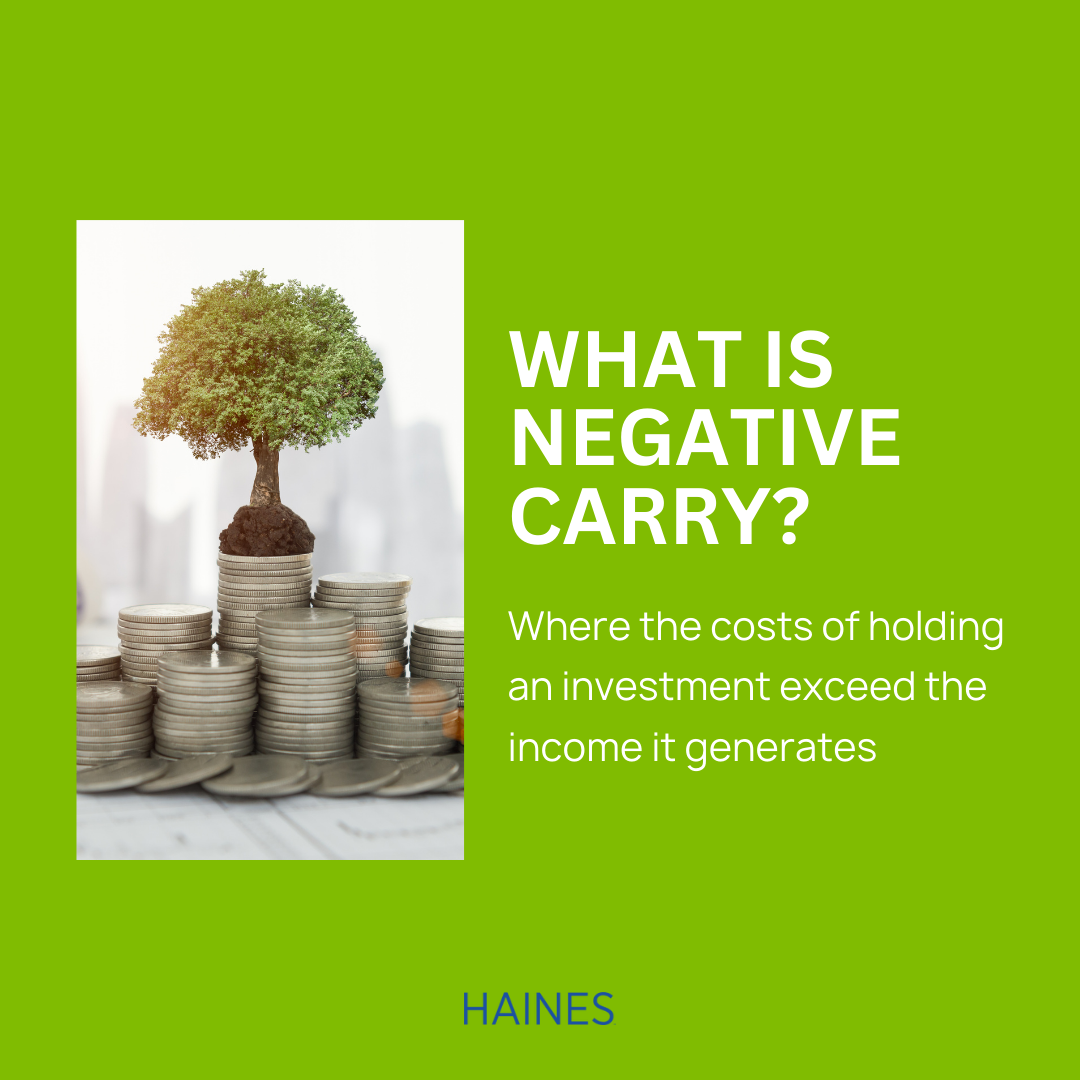Understanding complex financial concepts is all in a day’s work for real estate agents and brokers — and the extent of your knowledge can make or break an investment strategy for yourself, your firm, and your clients. One such concept is negative carry, sometimes known as negative cost of carry. This is a situation where the costs of holding an investment exceed the income it generates.
While this may sound counterproductive, negative carry can play a strategic role in long-term investment planning. At Haines, we want to provide you with the information you need to thrive in the real estate market. So, let’s explore what negative carry means for real estate professionals, whether it’s always a bad thing, and how you can use it to your advantage.
What Does Negative Cost of Carry Mean?
Negative carry occurs when the ongoing expenses of owning a property, such as mortgage payments, taxes, and maintenance, outweigh the income generated by the property, typically through rent. For example, if a rental property costs $2,000 per month to maintain but only brings in $1,500 in rent, the $500 shortfall is your negative carry.
Though this situation might seem like a losing proposition, many investors accept short-term losses if they anticipate long-term benefits. These benefits might include property appreciation, increased rental income over time, or tax advantages. In essence, negative carry is a calculated risk that can yield substantial rewards if managed effectively.
Is Negative Carry a Bad Thing?
Negative carry isn’t inherently bad — it depends on the context and strategy. For instance, investors often use negative carry as a tool to achieve specific financial goals like those outlined above. A property may be in a high-growth market that isn’t generating positive cash flow now but could rise substantially in value and yield significant profits. Alternatively, expenses like mortgage interest, property taxes, and even depreciation may provide much-needed tax deductions that offset short-term losses. Lastly, a property with negative carry today could still become profitable as rental rates increase, financing costs decrease, or both.
That said, negative carry has risks. Persistent losses can strain cash reserves, market downturns might delay profitability, and unexpected expenses like repairs can compound financial stress. Investors must carefully analyze whether the potential rewards justify the risks.
How to Use Negative Carry to Your Advantage
For real estate investors, understanding negative carry offers a competitive edge. Here’s how you can make it work for you or your clients:
- Conduct Market Research – Focus on areas with strong appreciation potential and rising rental demand.
- Plan Finances Carefully – Use conservative estimates when calculating potential cash flow and ensure you have a buffer to cover shortfalls.
- Leverage Tax Benefits – Consult with tax professionals to identify deductions that could offset your losses.
- Consult Experts – Financial advisors, tax specialists, and real estate leaders like our team at Haines can help you navigate complex investments with confidence.
- Monitor Data Trends – Keep an eye on interest rates and market conditions to time your investments effectively.
Find Your Next Investment Property With Haines
At Haines, we provide the data you need to understand market conditions and make smart financial decisions for yourself and your clients. If you’re looking for the next great investment opportunity, we can help. Our tool, Property Connect, allows you to access precise property data and get contact information for property owners from names to emails and phone numbers. You can prospect new investment opportunities based on the criteria you’re looking for and begin outreach immediately to close the deal. Click here to check out our packages and purchase online or you can schedule a free demo where we’ll walk you through the great features.
About the Author

Ashley Williams
Since 1932, Haines has been publishing the original Criss Cross directory. Now, instead of a giant book, we deliver the same great information in a digital format. We are a family-owned, certified women-owned business led by me as our first female, fourth-generation CEO. Our Criss+Cross Directory is nationally recognized for delivering essential residential and property data. We serve diverse clients — from government agencies to real estate professionals, mortgage companies, investors, contractors, and more
Want to Get More Tips from Haines? Subscribe to Our Blog
Recent Posts
Testimonials














